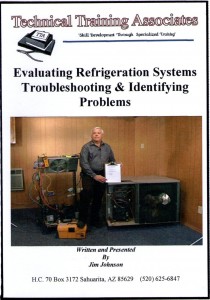The hospital's air and dirt problems required two men to vent, bleed, and purge the coils for up to two weeks consuming some 160 hours. This task was done three times a year to keep the coils operating.
During a sales call made to the hospital by Roedel, D'Allesandro & Mason (RDM & Associates, Inc.), Carsten Fehr, the hospital's power plant manager, saw a working demonstration of the Spirovent(r) combination air eliminator and dirt separator. The Spirovent, manufactured by Spirotherm, Inc., uses a patented coalescing and barrier medium that scrubs the air and dirt from the system fluid, allowing it to break free of the flow path. The air is released through an air-release mechanism and the dirt falls to the bottom and collects in the dirt chamber where it can be blown down through a manual or automated blow-down valve.
Hoping it would solve the persistent system problems, Fehr purchased the hospital's first Spirovent unit, a 4-in.-combination air eliminator/dirt separator. "Since the installation of the Spirovent, we have not had to visit the coils at all," commented Fehr. To be sure, he has sent his men to spot check the coils, only to have them return a couple of hours later finding no problems. The savings in man-hours alone has translated into thousands of dollars.
The RX for new construction
The success of that installation led Fehr to insist that the new 250,000-sq-ft Northwest addition to the hospital include a Spirovent as well. He took his performance and maintenance data to the engineering team, convincing them to add a new 10-in.-high velocity combination Spirovent to the project to address both the air and the dirt problems in the hospital's chilled water system. The new Spirovent, manufactured exclusively for large-volume, high-velocity systems, is installed in the piping going from the main to just ahead of the pumps supplying the existing north wing and the new northwest wing. "We wanted to do this to prevent any contamination in the existing system from entering the new wing," Fehr said.Since starting up the system, Fehr has made several observations. "We used to add about 80 gallons of chemicals to prevent corrosion, and this season we have added only 12 since the original 20 gallons we used to get the system ready. Four main air handlers in the north wing have not had to be cleaned or purged at all like they used to, and we have not had to flush anything in the other existing wings.
"The system pumps [equipped with VFDs] used to run at 90% during the hot summer days and with a few of those days already behind us, they ran at about 70% and achieved the same efficiencies." Fehr said that the Spirovent and some piping modifications have provided these energy savings. When asked recently how he felt about the newly installed Spirovents, Fehr stated, "It's almost a start-up and forget-about-it set-up." Other hot-water heating and chilled-water systems in the hospital may benefit as well when they are expanded or upgraded in the future. ES





